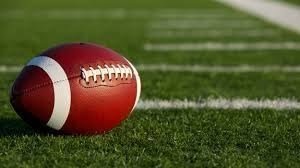1/2/2019

By Doug Criss, CNN
(CNN) -- The Georgia Bulldogs took on the Texas Longhorns in the Sugar Bowl Tuesday night in New Orleans, and the clash wasn't just on the gridiron.
Before the game the teams' live animal mascots -- Georgia's Uga the bulldog and Texas' Bevo the steer -- faced off on the sidelines.
It was supposed to be a simple photo op, but nobody told Bevo, who promptly charged at Uga (and almost took out a few humans in the process).
So, just why do college football teams have live animals mascots anyway?
The answer is actually pretty simple, Michael Lewis, a marketing professor at Emory University in Atlanta, told CNN.
"Human beings love animals," said Lewis, who runs a podcast on sports analytics research. "They're so much more compelling than a guy in a suit. The live animal mascots have some real advantages. I think of them as like a focal point for the fan community to get behind."
It all started with a dog
On any given Saturday afternoon, you'll find all manner of beast roaming the sidelines at games: Rameses the ram at North Carolina, Bill the goat at Navy, Traveler the horse at USC, the War Eagle at Auburn, Mike the tiger at LSU, Ralphie the buffalo at Colorado, Joy and Lady, the bears at Baylor.
But it's believed the first live animal college mascot was Yale's Handsome Dan bulldog. A student from England named Andrew Graves brought the first Handsome Dan to football and baseball games in 1889, according to the Yale News. There's been a continuous line of them ever since. An Olde English Bulldogge named Walter now represents Yale as Handsome Dan XVIII.
Lewis says it's no surprise that a dog was college football's first live animal mascot.
"Dogs are part of the family," he said, so fans have a natural affinity for them.
In the case of Uga, Georgia's mascot, Lewis said the bulldog's popularity extends beyond the university. It's as though the "dog is almost owned by the community."
It's not without controversy
But not everyone thinks it's healthy to use animals this way. Animal rights group People for the Ethical Treatment of Animals says there's not a really good reason to subject live animals to the stress of being a mascot for a school.
"Big cats, bears, and other live-animal mascots don't belong on college campuses," PETA says on a blog post on its website entitled "Live-Animal Mascots Score an 'F.'"
"Even in the best circumstances, subjecting animals to a busy university environment and forcing them into close proximity to crowds of people day in and day out is stressful and cruel."
There have been injuries
And animals do sometimes get hurt. Aurora the falcon, the mascot for the Air Force's football team, was injured back in November during a prank before the service academy's game with Army at West Point.
Aurora suffered an injury to both wings but is expected to make a full recovery, according to the Air Force Times.
Lewis said the use of live animals as mascots is becoming more controversial, as society as a whole becomes more conscious about the rights of animals. But the outrage isn't evenly applied.
"The dogs seem to be OK because they're domesticated," he said.
How the game ended
There's a little more consternation over the use of livestock animals, like Texas's Bevo, but Lewis said the real outrage seems to be for the use of predator animals -- like tigers and lions -- as mascots because many of them are caged on the sidelines and that just doesn't set right with some.
"That's a real trigger point for some people," he said.
The pre-game scuffle between Bevo and Uga, in which the steer took it to the bulldog, seemed to be a preview of the game, which Texas won 28-21. Heck, the animal clash may have been the most entertaining thing anyone saw in a college football stadium that day.
"For some folks that was the highlight of the New Year's Day bowls," Lewis chuckled.
